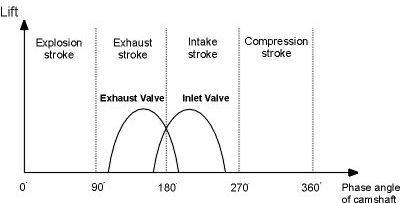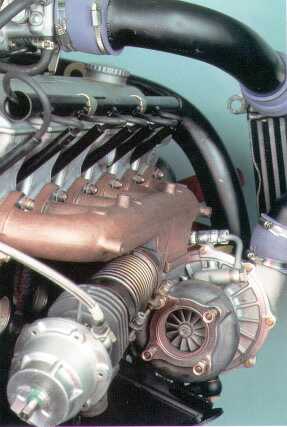


| |||
 | |||
Navigation -Home -Search -News -Portal Site Account -Login -Register -Online Users Forums -General Forum -Tech Forum -News Archives -Cars Files -Overview E21 -About -Parts -Funstuff -Classifieds -Links -Projects Features -Unified -Hosting -Personal -Vin-checker -Events Registry -Index -Thumbnails |
M20 Performance UpgradesThere are many ways to make your car go faster. However, most of them are not simple 'bolt on' mods and require great care and skill to accomplish. Also, if you increase the power of your car, you should think about upgrading your braking system, because the faster the car becomes, the faster it would have to be able to stop as well. Never neglect safety.Furthermore, most modifications come with a trade-off. To get more performance in the 'X' area, you will have to make sacrifices in the 'Y' area. This will become clear when reading on. Gearbox and Final Drive I guess these are the most straightforward ways to make your car go faster. You don't have to change anything to the engine, but by simply changing ratio's of the gearbox and final drive you can see a lot of improvements. If you have a 5-speed overdrive gearbox, changing to a dogleg sport box will bring the gear ratios closer together, which means the car will accelerate faster. If you install a short ratio differential (the higher the number, the faster the car becomes) you will see some improvement as well. Put two identical cars save for the differential and/or gearbox at a red light, roughly put the car with the highest total ratio (gearbox + diff) will win. In general, the higher the ratio numbers, the faster the car can accelerate. However, this comes at a price. Bringing up the ratios also means you will have to do more rpm's at any given speed. This increases wear and tear, and gets very noisy at more than say, 120km/h, not to mention the increase in fuel consumption. You have to make the descision for yourself though. At any rate, it is always beneficial to install a Limited Slip Differential (LSD), because it offers much better traction. For more info about E21 M20 gearboxes, see the M20 Gearbox Page. Camshaft People always say, torque comes from the block, and power comes from the cylinder head. This is essentially true. You can increase power output by fitting a more agressive camshaft. However, here again this comes at a cost. Installing a more agressive camshaft means that the valves will open sooner, and close later, allowing more air through than a stock cam. More air is more performance. However, depending on how much longer the valves are opened, you will see your idle get rough and low-end torque drop. That is the cost to pay for extra horsepower at high revs. However, installing a mild cam shouldn't penalize you too much at low revs, allowing the car still to be driven normally. Very agressive cams have an overlapping valve opening, meaning at some point the intake valve opens when the exhaust valve hasn't closed yet (if you increase the opening time by enough, you're bound to have overlap). While this is okay for racing purposes, these engines are hardly streetable.  You can either have your own camshaft reground by a machine workshop, or you can buy a Schrick or other performance camshaft with various degrees of closure. Don't forget to install stronger valve springs since they will have to close the valve faster and endure a higher lift. You will also want to do a porting job for a better flow, talk to your machine workshop about this. Stroking the Block This is probably the best option, because the only downside to it is the budgetary hole it will leave on your bank account ;) Stroking the block means to increase the displacement of your engine. This can be done in two ways (or a combination of both). Either you increase the stroke length (hence the term 'stroker') or you increase the bore size. Increasing the stroke is done solely by a change of crankshaft with a larger swing, while increasing the bore is done by drilling out the cylinder walls in the block, thus making them wider and increasing their volume. It's easy enough to see that both procedures will increase the displacement. However, an extra milimeter of bore yields more displacement than an extra milimemter of stroke. This follows from the formula to calculate displacement given the bore and stroke: displacement = (bore / 2)² * Pi * stroke * #cylsNow, how does this translate into real applications? Well, there are two popular ways to increase displacement. The first is easy: drop a complete 325i engine from an E30 in your E21. This is a very straightforward mod and has very little issues to deal with. This will bring the cylinder bore from 80mm to 84mm, so this modification is essentially a bore increase. The other option is to make a 2.7L stroker using a so-called 'Eta' block. These are found in the 325e, 328e and 528e in the US. These engines were designed as low-powered but fuel efficient and torquey power plants. The trick is to combine an Eta bottom-end with a 320/6 or 323i head and fuel system. This will not only increase the bore from 80mm to 84mm, but increase the stroke as well (which is good for torque). Both the Solex 4A1 carburettor and K-jetronic fuel injection can supply a 2.7L engine with enough mixture to allow full power deployment. The Eta block has low-compression pistons however, so you probably will want to replace them. I will not cover the eta conversion in detail here, it is fairly well documented for both E21 and E30 models. Just know that the cylinder head, the gearbox and most other engine components are straightforward bolt-ons. You will have to do some minor modifications here and there though. Here is a graphic that shows the displacement in function of bore size for three given stroke lengths (respectively of the 320/6, the 323i and the 2.7L Eta). 
Turbocharging Another popular way to increase horsepower on internal combustion engines is turbocharging. This comprises the use of a compressor (the 'turbo') which forces air into the cylinders using energy from the exhaust gasses. This is called forced induction. This is probably the most tricky modification to get done right, though it can potentially deliver the biggest power increase as well. In theory you could bolt a turbo setup around your engine, but if you fail to prepare the inside of the engine properly, you will wreck it in no time. Some of the issues include lowering the compression ratio, heavy duty and programmable fuel system (to increase fuel supply under boost), means to alter ignition under boost, a proper exhaust manifold, and a careful selection of a turbocharger. The 323i has been succesfully turbocharged by tuners like Schnitzer and by individuals. Some have even installed a twin-turbo setup on the M20 (three cylinders each serving a smaller compressor). If you plan to turbocharge your engine, I suggest you get a good book about this subject.  KKK turbo on a 323i by Schnitzer |
Copyright © 2001-2005 e21.tricord.be. All rights reserved. Powered by Unified. |